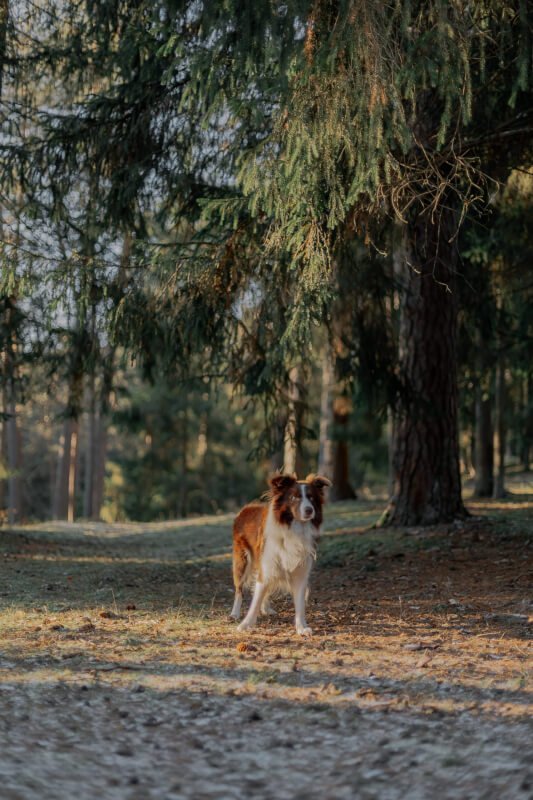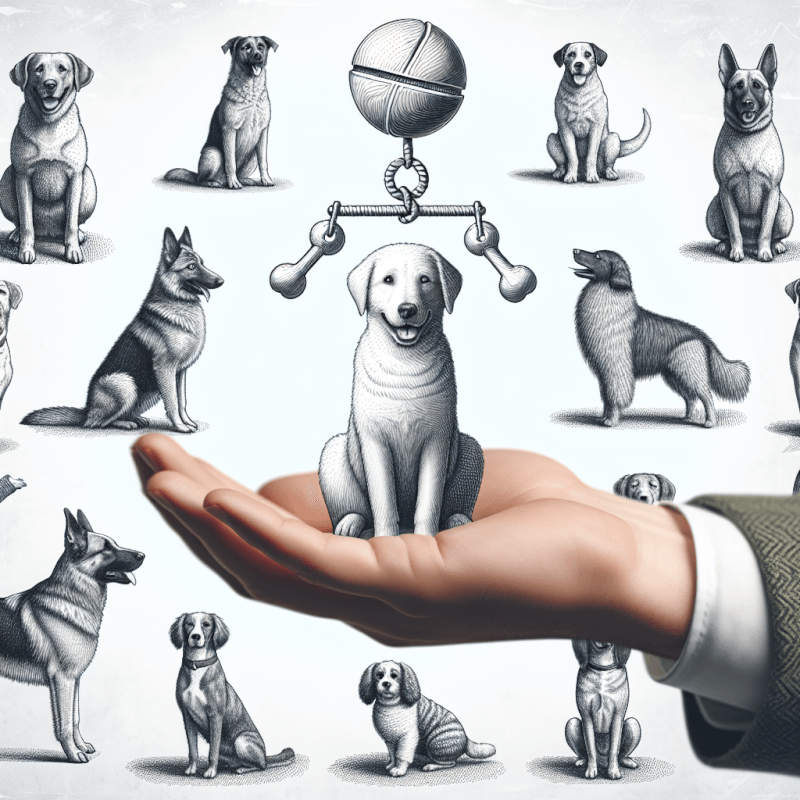Ready to improve your furry friend’s behavior? Look no further than “Dog Training For Behavior”, the ultimate guide to unleashing your dog’s full potential. Whether your four-legged companion needs help with obedience, aggression, or even separation anxiety, this comprehensive training program has got you covered. From teaching essential commands to addressing common behavioral issues, this article will provide you with practical tips and expert advice to transform your dog into a well-behaved and happy member of the family. Get ready to embark on an exciting journey of positive reinforcement and effective training methods.

Understanding Dog Behavior
Owning a dog comes with the responsibility of understanding their behavior. By understanding why dogs behave the way they do, you can develop a stronger bond with your furry friend and address any behavioral issues that may arise. This article will guide you through the basics of canine behavior, how to recognize and interpret dog body language, and common behavioral issues in dogs.
Ready for Cat Trivia?
Test your knowledge about cats!

Canine Behavior Basics
Dogs are social animals, and their behavior is greatly influenced by their instincts and past experiences. It’s important to consider their natural behaviors when training and interacting with them. Dogs have various communication methods, such as body language, vocalizations, and facial expressions. Understanding these cues will help you better understand your dog’s emotions and intentions.
Recognizing and Interpreting Dog Body Language
Dogs primarily communicate through body language, and being able to accurately interpret their signals is key to understanding their needs and emotions. They use a combination of facial expressions, postures, and tail movements to convey their intentions. For example, a wagging tail doesn’t always indicate friendliness, as it can also be a sign of nervousness or aggression. Learning how to read your dog’s body language will enable you to respond appropriately and avoid misunderstandings.
Common Behavioral Issues in Dogs
Just like humans, dogs can experience behavioral problems. These issues can range from separation anxiety and aggression towards people or other animals, to excessive barking and destructive behavior. Each behavioral problem has its own underlying causes, and addressing them requires patience, consistency, and understanding. By identifying and addressing these issues, you can improve your dog’s behavior and enhance their quality of life.
Positive Reinforcement Training Methods
When it comes to training dogs, positive reinforcement is widely regarded as the most effective and humane method. This training approach focuses on rewarding desired behaviors rather than punishing unwanted ones. By using positive reinforcement, you can motivate your dog to repeat behaviors that you find desirable.
Benefits of Positive Reinforcement
Positive reinforcement has numerous benefits for both you and your dog. It strengthens the bond between you and your furry friend, encourages good behavior, and helps build trust and confidence. This training method is based on positive associations, creating an enjoyable and rewarding experience for your dog. With positive reinforcement, you can effectively train your dog while maintaining a loving and harmonious relationship.
Using Rewards and Treats
Rewards and treats are essential tools in positive reinforcement training. By providing rewards, such as treats, praise, or playtime, you can communicate to your dog that they have done something right. Timing is key when using rewards, as you want to reinforce the desired behavior immediately. Consistency and variety in rewards are important to keep your dog motivated and engaged during the training process.
Clicker Training Techniques
Clicker training is a popular method that utilizes a small handheld device called a clicker as a signal for desired behaviors. This technique pairs a distinct sound, the click, with a reward. The clicker is used to mark the exact moment your dog performs the desired behavior, which helps them understand what they are being rewarded for. Clicker training is a precise and effective way to communicate with your dog during training sessions.
Socialization and Obedience Training
Socialization and obedience training are crucial aspects of raising a well-behaved and confident dog. By exposing your dog to various environments, people, and animals from an early age, you can help them develop social skills and reduce the likelihood of behavior problems later on. Obedience training focuses on teaching your dog basic commands and behaviors that will make them a well-mannered member of society.
Importance of Early Socialization
Early socialization plays a vital role in shaping your dog’s behavior. Exposing them to different people, animals, sounds, and experiences during their critical socialization period (typically between 3 and 14 weeks of age) helps them become well-adjusted and confident adults. Socialization should be a positive and gradual process, ensuring that your dog feels safe and comfortable while being introduced to new situations.
Exposing Dogs to Various Environments
To ensure your dog is well-rounded and adaptable, it’s important to expose them to a variety of environments. This includes walks in different neighborhoods, visits to dog-friendly parks, encounters with people of all ages and backgrounds, and exposure to various sounds and stimuli. By gradually introducing your dog to different environments, you can help prevent fear or anxiety-related behavioral problems.
Teaching Basic Obedience Commands
Basic obedience commands are the foundation of a well-behaved dog. Teaching your dog commands such as sit, stay, come, and leave it not only helps with day-to-day interactions but also provides mental stimulation and strengthens the bond between you and your dog. Consistency, patience, and positive reinforcement are key when teaching obedience commands. Start with small, achievable steps, and gradually increase the level of difficulty as your dog progresses.
Addressing Common Behavioral Problems
While every dog is unique, certain behavioral problems are relatively common and can be addressed with consistent and effective training techniques. Here, we will explore some of these common issues and provide tips on how to modify your dog’s behavior.
Separation Anxiety
Separation anxiety is a distressing condition that occurs when a dog becomes anxious or panicked when left alone. Common signs of separation anxiety include excessive barking, destructive behavior, house soiling, and attempts to escape. To address separation anxiety, gradually desensitize your dog to your departure cues, establish a predictable routine, provide mental stimulation and physical exercise, and consider using calming techniques or seeking professional help if needed.
Aggression Towards People
Aggression towards people can be a serious behavioral problem that requires immediate attention. Aggression can manifest as growling, biting, lunging, or showing other signs of hostility. It’s important to identify the underlying cause of aggression, which can range from fear and resource guarding to territorial behavior. Consultation with a professional dog trainer or behaviorist is highly recommended to develop an appropriate behavior modification plan and ensure safety for both your dog and others.
Aggression Towards Other Animals
Aggression towards other animals is another common behavioral issue in dogs. It can occur due to fear, dominance, or inadequate socialization. Properly introducing your dog to other animals in controlled environments, gradual desensitization and counterconditioning, positive reinforcement for calm behavior, and providing consistent leadership can help reduce aggression towards other animals. Seeking professional guidance is advisable, especially if your dog’s aggression is severe or poses a risk to others.
Excessive Barking
Barking is a natural way for dogs to communicate, but excessive barking can become problematic, both for you and your neighbors. It can be caused by boredom, fear, anxiety, territorial behavior, or seeking attention. To address excessive barking, identify the root cause, provide mental and physical stimulation, teach a “quiet” command using positive reinforcement, and consider using noise-cancelling devices or seeking professional help if the problem persists.
Jumping on People
Jumping on people is a behavior that many dogs exhibit when seeking attention or greeting their owners and guests. While it may seem harmless, it can be unpleasant or even dangerous, especially if your dog jumps on children or elderly individuals. Teaching your dog an alternative behavior, such as sitting or offering a paw, rewarding calm greetings, and consistently reinforcing the desired behavior can help eliminate jumping. It’s important to communicate to your guests the appropriate way to interact with your dog to prevent reinforcement of the jumping behavior.
Chewing and Destructive Behavior
Chewing and destructive behavior are common issues, particularly in puppies or dogs with excess energy or separation anxiety. Provide appropriate chew toys, mentally stimulating activities, and physical exercise to redirect their chewing behavior. Puppy-proofing your home, using deterrent sprays or barriers, and gradually acclimating your dog to being alone can also help deter destructive chewing. Ensuring that your dog has plenty of outlets for mental and physical stimulation is essential for preventing destructive behavior.
Housebreaking Issues
Housebreaking, or potty training, is an important aspect of raising a dog. Accidents in the house can be frustrating, but it’s important to remember that it takes time and patience to teach your dog where and when to eliminate. Consistency, a regular potty schedule, positive reinforcement for appropriate elimination, supervision, and avoiding punishment are key to successful housebreaking. Crate training can also be a useful tool in preventing accidents and teaching your dog to hold their bladder.

Specific Training Techniques for Behavior Modification
In addition to general training approaches, there are specific techniques that can be applied to modify certain behaviors in dogs. These techniques include desensitization and counterconditioning, positive interrupters, redirecting unwanted behavior, targeting and touch training, and boundary and containment training.
Desensitization and Counterconditioning
Desensitization and counterconditioning are techniques that can be used to modify fear and anxiety-related behaviors in dogs. Desensitization involves gradually exposing your dog to the fear-inducing stimulus in a controlled and positive manner. Over time, this helps your dog become less fearful and anxious. Counterconditioning involves associating the fear-inducing stimulus with something positive, such as treats or playtime, to create a positive association and change your dog’s emotional response.
Positive Interrupters
Positive interrupters utilize a distraction or interruption to redirect your dog’s attention away from unwanted behavior. For example, if your dog starts to bark excessively, you can use a positive interrupter, such as a hand clap or a verbal cue, to distract them and redirect their focus. Once your dog stops the unwanted behavior, you can then reward them for the cessation and encourage an alternative behavior.
Redirecting Unwanted Behavior
Redirecting unwanted behavior involves providing an alternative behavior for your dog to engage in when they exhibit undesirable behavior. For example, if your dog starts chewing on the furniture, you can redirect their attention to an appropriate chew toy. By consistently redirecting and rewarding the desired behavior, you can effectively shift your dog’s focus away from destructive or unwanted behaviors.
Targeting and Touch Training
Targeting and touch training involve teaching your dog to touch a specific object or body part with their nose or paw. This technique can be used to redirect your dog’s attention, improve focus and impulse control, and facilitate communication during training sessions. By using a target stick or your hand as a target, you can shape your dog’s behavior and guide them through various exercises.
Boundary and Containment Training
Boundary and containment training teach your dog to respect boundaries and stay within certain boundaries or areas. This is particularly useful for preventing behaviors such as jumping on furniture, leaving a specific area in the house, or wandering off during walks. Boundary training involves teaching your dog to associate certain cues or physical barriers with the desired behavior, such as staying behind a specific line or waiting at the door until given permission to proceed.
Dog Training Tools and Equipment
There are various tools and equipment available that can aid in dog training and behavior modification. While these tools can be helpful, it’s important to use them responsibly and consult with a professional to ensure their appropriate usage.
Leashes and Collars
Leashes and collars are essential tools for controlling and guiding your dog during walks and training sessions. A standard leash and collar are suitable for most dogs, but certain breeds or individuals may require specialized equipment, such as head halters or front-clip harnesses. Always ensure that collars and harnesses are properly fitted, comfortable, and do not restrict your dog’s breathing or movement.
Harnesses
Harnesses distribute the pressure evenly across a dog’s body and can be a good alternative to collars, particularly for dogs that tend to pull on the leash. There are different types of harnesses available, including front-clip, back-clip, and no-pull harnesses, each designed to address specific training needs. Harnesses are particularly recommended for dogs with respiratory issues or those prone to neck injuries.
Clickers and Training Whistles
Clickers and training whistles are useful tools for communication and reinforcement during training sessions. Clickers provide a consistent and distinct sound that marks the desired behavior, while training whistles can be used to convey commands or recall signals over long distances. These tools are effective for precise communication and can help reinforce positive behavior quickly and reliably.
Treat Pouches and Food Rewards
Treat pouches are convenient accessories that allow you to have easy access to treats during training sessions or walks. They keep your hands free and ensure that rewards are readily available to reinforce desired behaviors. Food rewards, such as small, soft treats or pieces of your dog’s regular food, are valuable tools for positive reinforcement training. They should be used in moderation and tailored to your dog’s dietary needs.
Training Beds and Mats
Training beds and mats provide a designated space for your dog to relax and settle down. These tools can be particularly useful when teaching your dog to wait or stay in one place, such as during meal times or when guests arrive. By associating positive experiences and rewards with the training bed or mat, you can teach your dog to go to their designated spot on command.
Toys for Interactive Training
Toys can be used as interactive tools during training sessions to keep your dog engaged and motivated. Interactive toys, such as puzzle toys or treat-dispensing toys, provide mental stimulation and can be used to reinforce learning and practice commands. Choose toys that are safe, durable, and appropriate for your dog’s size and breed.

Training Tips for Specific Breeds and Ages
Different breeds and age groups have varying training needs and characteristics. Tailoring your training approach to accommodate these specific requirements can greatly enhance the effectiveness of your efforts.
Working Dogs and Herding Breeds
Working dogs and herding breeds, such as Border Collies, German Shepherds, and Australian Shepherds, are energetic and intelligent. They thrive on mental and physical stimulation and require consistent mental and physical exercise. Obedience training, agility training, or participating in dog sports can be a great outlet for their energy and can help fulfill their natural instincts.
Toy Breeds and Small Dogs
Toy breeds and small dogs, such as Chihuahuas, Pomeranians, and Yorkshire Terriers, may require a different approach due to their size and vulnerability. Gentle, positive reinforcement methods are crucial to building trust and confidence in these sensitive dogs. Care should be taken to provide them with a safe and secure environment, and training sessions should be short and focused to accommodate their shorter attention spans.
Puppies and Adolescent Dogs
Training puppies and adolescent dogs is a crucial period that sets the foundation for their lifelong behavior. Early socialization, basic obedience training, and positive reinforcement are fundamental during this stage. Consistency, patience, and gradual progression in training exercises are key when working with puppies and adolescent dogs.
Senior Dogs and Aging Issues
As dogs age, they may experience physical and cognitive changes that require adjustments to their training routines. Training sessions should be tailored to their comfort and capabilities, focusing on maintaining mental stimulation and physical activity suitable for their age and health condition. Positive reinforcement, gentle exercises, and adapting to their changing needs can help keep senior dogs happy and engaged.
Training Techniques for Fearful and Reactive Dogs
Fearful and reactive dogs require special attention and understanding to help them overcome their anxieties and develop confidence. Calm and patient training techniques will be essential in working with these dogs.
Gradual Desensitization
Gradual desensitization involves exposing your dog to fear-inducing stimuli in a controlled and systematic manner, starting at a level where they are comfortable and gradually increasing the intensity or proximity over time. This technique helps your dog build positive associations and develop increased tolerance to the fear-inducing stimuli.
Counterconditioning Fearful Responses
Counterconditioning aims to change your dog’s emotional response to fear-inducing stimuli by associating them with positive experiences or rewards. By consistently pairing the fear-inducing stimulus with something pleasant (such as treats or play), you can help your dog develop a positive association and replace their fearful response with a more relaxed or positive one.
Managing Reactive Behavior
Managing reactive behavior involves implementing strategies to prevent or minimize triggers that elicit reactive responses in your dog. This may include controlling the environment, keeping a safe distance from fear-inducing stimuli, using physical barriers or visual blocks, or redirecting your dog’s attention to alternative behaviors. Effective management techniques can help reduce stress and anxiety, allowing your dog to stay calm and focused during training sessions.
Seeking Professional Help
Dealing with fearful and reactive behavior can be challenging and may require professional guidance from a certified dog trainer or behaviorist. These professionals have the knowledge and experience to assess your dog’s behavior, develop a tailored behavior modification plan, and provide ongoing support and guidance. Seeking professional help ensures that you are using appropriate techniques and can greatly increase your chances of success.

Maintaining Consistency and Long-Term Success
Consistency and long-term commitment are essential for successful dog training and behavior modification. Establishing clear rules and boundaries, effective communication, regular training sessions, and monitoring progress are key factors in maintaining consistency and achieving long-term success.
Establishing Clear Rules and Boundaries
Consistency in training requires establishing clear rules and boundaries from the beginning. This includes defining what behaviors are acceptable and unacceptable, setting consistent expectations, and enforcing them consistently. Clear rules and boundaries provide structure and guidance, which helps your dog understand what is expected of them and promotes desirable behavior.
Effective Communication and Timing
Effective communication is critical in training dogs. Dogs respond best to positive reinforcement and clear, consistent cues or commands. Using positive reinforcement immediately after your dog exhibits a desired behavior helps them associate the action with the reward. Additionally, timing is crucial when providing corrections or redirections. Immediate feedback ensures that your dog understands which behaviors are desirable and which need modification.
Regular Training and Practice Sessions
Regular training and practice sessions are necessary to reinforce learned behaviors and maintain consistency. Consistency in training schedules and routines helps dogs understand what is expected of them and promotes faster learning. Short, focused training sessions conducted regularly throughout the day are generally more effective than infrequent, long training sessions.
Monitoring Progress and Making Adjustments
Monitoring your dog’s progress and making necessary adjustments to your training approach are important aspects of long-term success. Pay attention to your dog’s responses and behavior during training sessions, and adjust your techniques or difficulty level accordingly. Not all dogs progress at the same rate, so being flexible and adaptable will greatly contribute to your dog’s learning process and overall success.
Training Beyond Behavior: Advanced Skills
Once you have established a strong foundation of basic obedience and addressed any behavioral issues, you can explore advanced training skills that enhance the bond between you and your dog and provide mental and physical stimulation.
Trick Training and Agility
Trick training and agility are fun activities that engage both your dog’s mind and body. Trick training allows you to teach your dog entertaining and impressive tricks, such as roll over, play dead, or high five. Agility training involves navigating various obstacles, such as jumps, tunnels, and weave poles, in a set course. These activities improve your dog’s coordination, focus, and problem-solving skills while strengthening the bond between you both.
Canine Sports and Activities
Participating in canine sports and activities, such as flyball, dock diving, or scent work, offers an outlet for your dog’s natural abilities and instincts. These activities provide mental and physical stimulation, promote teamwork between you and your dog, and offer opportunities for socialization and bonding. Canine sports can be enjoyed by dogs of all ages and sizes and can be a great way to further enrich their lives.
Service Dog Training
Service dog training focuses on teaching dogs specific tasks and behaviors to assist individuals with disabilities. This specialized training requires the guidance of a professional and involves teaching skills such as retrieving objects, opening doors, or providing support for mobility. Service dogs play a vital role in improving the quality of life for individuals with disabilities and require extensive training tailored to their specific needs.
Therapy Dog Training
Therapy dog training prepares dogs to provide comfort and emotional support to individuals in various settings, such as hospitals, nursing homes, or schools. This training involves teaching dogs to remain calm and well-behaved in various environments, interact with a variety of people, and respond to cues from handlers. Therapy dogs provide companionship and emotional support to those in need, making a positive impact in the lives of many.
In conclusion, understanding dog behavior is crucial for effective training and addressing behavioral issues. By recognizing and interpreting dog body language, using positive reinforcement training methods, and providing socialization and obedience training, you can develop a well-behaved and well-adjusted dog. Addressing common behavioral problems, utilizing specific training techniques, and making use of appropriate training tools and equipment can further enhance the training experience. Remember to tailor your training approach to the specific needs of your dog based on their breed, age, and behavior. Lastly, maintaining consistency, seeking professional help when needed, and exploring advanced training skills are key to long-term success and a strong bond with your furry companion. Happy training!



